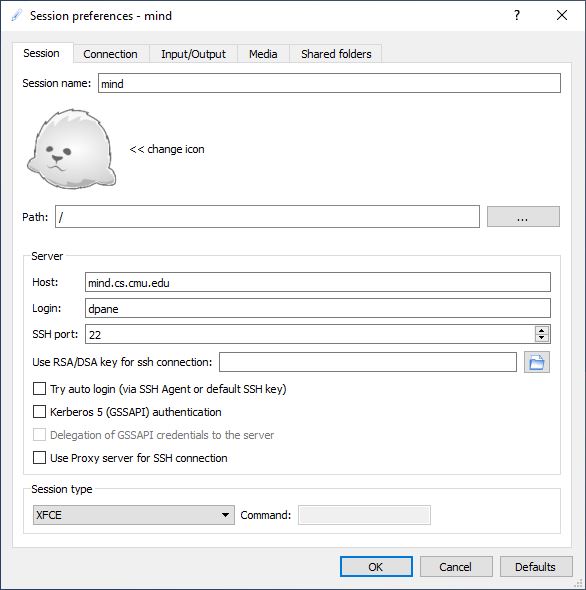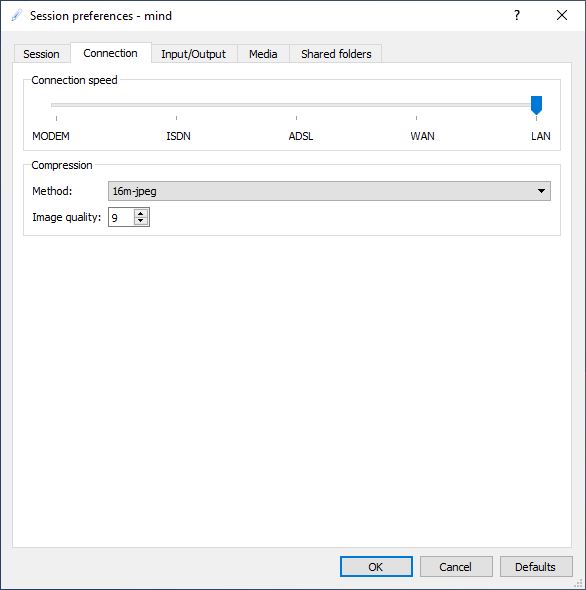Cluster Access
Cluster User Accounts
Lab members of labs that pay for Cluster Access and Support are qualified to use the Neuroscience Institute/CNBC Cluster.
In order to log onto the cluster, each user must have an Andrew ID and their personal “SCS user account”. Although we will NOT support multi-user accounts, we do support UNIX groups to control permissions so users among a lab group or project can share access to their space and files. Each lab also has dedicated space to share among their labs members. The SCS user account will provide you with a Kerberos ID and password that will be used to login to the Cluster.
To apply for cluster account email David Pane (dpane@andrew.cmu.edu) (please copy your PI), the following information:
1) Your Andrew ID:
2) Your Name:
3) Your CMU Email Address:
4) CMU Affiliation (Choices are: Faculty, Staff, Ph D Student, Masters Student, Undergraduate Student, Visitor, External Collaborator or Other (please specify): ___ )
5) Degree Program:
6) Did you previously had a SCS account, what was your prior SCS Username?
7) Do you want your account notification sent to an additional email address? If yes, please indicate that address here:
8) PI and Lab in which you are affiliated.
9) Phone number (preferably a cell phone) in case David needs to contact you anytime during which you have an account on the cluster.
10) Non CMU email that we can contact you:
Once your SCS account has been created you will receive an email from SCS with setting password information. David will let you know when the cluster account has been created.
Information you may find helpful when logging onto the Cluster.
To get into the cluster, the users will log into the head node ( hostname: mind.cs.cmu.edu ) using the SCS user id and password. The cluster only supports secure connection methods. A Secure Shell (ssh) client application is needed to log onto the cluster for remote command-line execution. MacOS and Linux systems have a built-in application for SSH that can be accessed at the command line. Locate the command line by launching
terminal, located in your /Applications/Utilities folder. Windows users can find many different programs for SSH. One of the most popular of these is PuTTY.
Once you log in with SSH, you will be presented with a standard Linux command prompt.
UNIX Shell:
ssh -Y <userID>@mind.cs.cmu.edu (where “userID” is your CMU SCS userID)
Windows
- Open a secure terminal session using PuTTY, SSH Tectia – Terminal or a similar application. You can us a X-Win 32 session if you wish to do more than command line work.
- Click Quick Connect in the toolbar and type the following:
Host Name: mind.cs.cmu.edu
User Name: your SCS userID - Click Connect.
Note: You may receive a prompt from your terminal application regarding connection keys. Select an option and click OK. - When prompted, enter your CMU SCS password and press Enter.
- To end your session, click the Disconnect icon in the toolbar and then click Yes.
Macintosh
- Open a Terminal session. (You can use this X Window System software on your Mac, if you wish to do more than command line work. http://xquartz.macosforge.org/landing/)
- In the Terminal window, type the following command:
ssh -Y -C -l userID mind.cs.cmu.edu
(where “userID” is your CMU SCS userID) and press Return. - If this is your first time connecting to the Linux timeshare server, you may encounter a message similar to “The authenticity of host ‘mind.cs.cmu.edu’ can’t be established. Are you sure you want to continue connecting (yes/no)?” Type yes and press Return.
- When prompted, enter your password and press Return.
- Use UNIX commands to navigate and access the software.
- To end your session, type exit.
Graphical User Interface Client Software
Although we recommend you use the command line to access the cluster, X2Go server, an open source remote desktop software for Linux is installed on the cluster so users can use the client software to remotely access to a Linux system’s graphical user interface.
If you are new to this type of software, you should start here: https://wiki.x2go.org/doku.php/doc:newtox2go
You can download the client software here: https://wiki.x2go.org/doku.php/doc:installation:x2goclient
To help you configure the software, the following screen caputres represent the settings I used to connect to the mind cluster.


